Related Research Articles
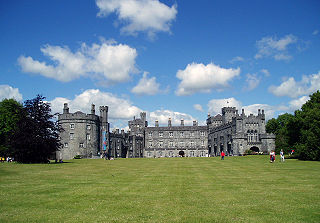
Kilkenny Castle is a castle in Kilkenny, Ireland, built in 1260 to control a fording-point of the River Nore and the junction of several routeways. It was a symbol of Norman occupation, and in its original 13th-century condition, it would have formed an important element of the town's defences with four large circular corner towers and a massive ditch, part of which can still be seen today on the Parade.
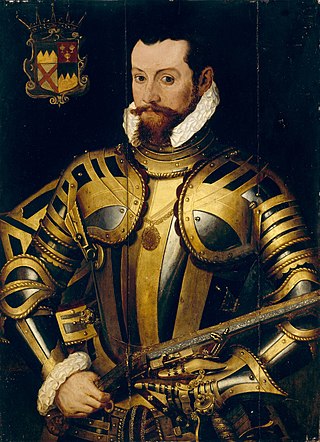
Thomas Butler, 10th Earl of Ormond and 3rd Earl of OssoryPC (Ire), was an influential courtier in London at the court of Elizabeth I. He was Lord Treasurer of Ireland from 1559 to his death. He fought for the crown in the Rough Wooing, the Desmond Rebellions, and Tyrone's Rebellion. He fought his rival, Gerald FitzGerald, 14th Earl of Desmond in the Battle of Affane in 1565.
Sir James OrmondaliasButler was the son of John Butler, 6th Earl of Ormond. He was Lord Treasurer of Ireland from 1492 to 1494, and helped to defend the Lordship of Ireland against the forces of Perkin Warbeck. He was murdered by Sir Piers Butler on 17 July 1497. Piers would later hold the title of Earl of Ormond.
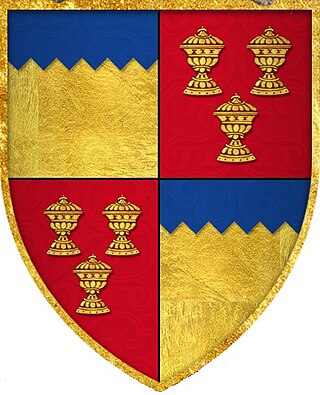
Piers Butler, 8th Earl of Ormond, 1st Earl of Ossory also known as Red Piers, was from the Polestown branch of the Butler family of Ireland. In the succession crisis at the death of Thomas Butler, 7th Earl of Ormond he succeeded to the earldom as heir male, but lost the title in 1528 to Thomas Boleyn. He regained it after Boleyn's death in 1538.
James Butler, 2nd Earl of Ormond was a noble in the Peerage of Ireland. He was Lord Justice of Ireland in 1359, 1364, and 1376, and a dominant political leader in Ireland in the 1360s and 1370s.
Sir Walter Butler, 11th Earl of Ormond and 4th Earl of Ossory (1559–1633), succeeded his uncle Black Tom, the 10th earl, in 1614. He was called "Walter of the Beads" because he was a devout Catholic, whereas his uncle had been a Protestant. King James I intervened and awarded most of the inheritance to his uncle's Protestant daughter Elizabeth. Ormond contested the King's decision and was for that insolence detained in the Fleet Prison from 1619 until 1625 when he submitted to the King's ruling. He then found a means to reunite the Ormond estate, by marrying his grandson James, who had been raised a Protestant, to Elizabeth's only daughter.
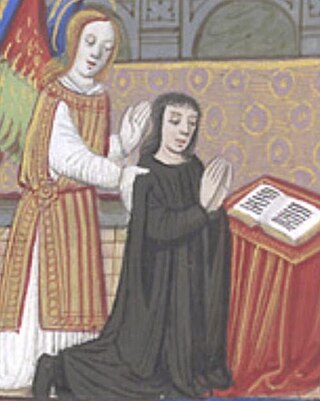
Thomas Butler, 7th Earl of Ormond PC was the youngest son of James Butler, 4th Earl of Ormond. He was attainted, but restored by Henry VII's first Parliament in November 1485, and the statutes made at Westminster, by Edward IV, which declared him and his brothers traitors, were abrogated.
Richard Butler, 3rd Viscount Mountgarret (1578–1651) was the son of Edmund Butler, 2nd Viscount Mountgarret and Grany or Grizzel, daughter of Barnaby Fitzpatrick, 1st Baron Upper Ossory. He is best known for his participation in the Irish Confederate Wars on behalf of the Irish Confederate Catholics.
Sir Richard Butler (1395–1443) of Polestown, County Kilkenny, was the second son of James Butler, 3rd Earl of Ormond, and Anne Welles. His older brother James inherited the earldom. Following the extinction of the senior family line, his great-grandson, Piers Butler, became the 8th Earl of Ormond.
Sir Edmund MacRichard Butler of Polestown was the eldest son of Sir Richard Butler of Polestown and adopted the Gaelic title of The MacRichard of Ossory.

Sir Edmund Butler of Cloughgrenan, was an Irish noble and the second son of James Butler, 9th Earl of Ormond and Lady Joan Fitzgerald. He was a scion of the House of Ormond, and a rebel against the Tudors.
Theobald Butler was the illegitimate son of Sir James Butler of Polestown and his wife Sabh Kavanagh. He was the elder brother of Piers Butler, 8th Earl of Ormond and of Edmond Butler of Polestown.

Margaret Butler, Countess of Ormond, Countess of Ossory was an Irish noblewoman and a member of the powerful and celebrated FitzGerald dynasty also known as "The Geraldines". She married Piers Butler, 8th Earl of Ormond, by whom she had three sons and six daughters.
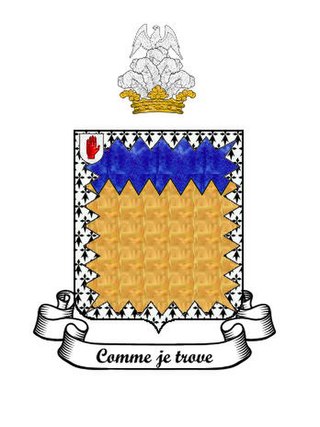
Sir Thomas Butler, 1st Baronet of Cloughgrenan, was an Irish nobleman.
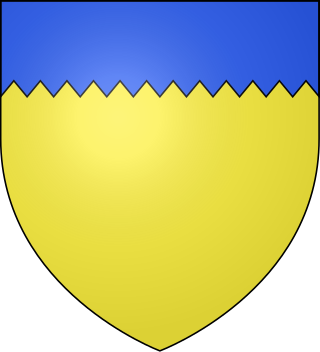
Butler is the name of a noble family whose members were, for several centuries, prominent in the administration of the Lordship of Ireland and the Kingdom of Ireland. They rose to their highest prominence as Dukes of Ormonde. The family has produced multiple titles such as Baron Cahir, Baron Dunboyne, Viscount Ikerrin, Viscount Galmoye, Viscount Mountgarret, Viscount Thurles, Earl of Carrick, Earl of Kilkenny, Earl of Ormond, Earl of Ossory, Marquess of Ormonde and Duke of Ormonde. Variant spellings of the name include le Boteler and le Botiller. The Butlers were descendants of Anglo-Norman lords who participated in the Norman invasion of Ireland in the 12th century. The surname has its origins in the hereditary office of "Butler (cup-bearer) of Ireland", originating with Theobald Walter, 1st Chief Butler of Ireland. The arms of later family members depicted three cups in recognition of their original office.
Walter Butler of Polestown was High Sheriff of County Kilkenny, Ireland in 1483.
Sir Richard Butler of Poletown, County Kilkenny, was a descendant of the Butler family - the Earls of Ormond. He was the third son of Edmond Butler of Polestown. He was invested as a Knight on 21 April 1605. His older brother Peter founded the "Roscrea" cadet branch of the family, which is in turn descended from the "Polestown" cadet branch.
Edmond Butler of Polestown,, was a descendant of the Butler family - the Earls of Ormond. He was the eldest son of Walter Butler of Poletown. His brothers were Richard, Peter and Walter. His uncle Peter founded the "Roscrea" cadet branch of the family, which is in turn descended from the "Polestown" cadet branch. He held the office of Member of Parliament (M.P.) for County Kilkenny from 1634 to 1635.

St. Mary’s Collegiate Church Gowran, also known as the Church of the Blessed Virgin of the Assumption, is a church in the centre of the town of Gowran, County Kilkenny, Ireland. The site is a National Monument in the care of the Gowran Development Association (GDA) and the Office of Public Works (OPW). The church and its family connections have been of huge importance to Gowran and further afield over the centuries. The church is a collegiate church, which means that the priests or chaplains attached to it lived in community together. The present church was not a monastery or an abbey; however experts believe the church was built on the site of an earlier monastery. The presence of an Ogham stone on the site, which is on display in the chancel, suggests there was a place of worship here dating back 2000 years to Celtic times or beyond.

Clogrennane Castle is a ruined castle in County Carlow, Ireland, near Clogrennane, about two miles from Carlow on the River Barrow on the county border with County Laois.
References
- ↑ Note: in the records, Polestown is often spelled as "Poolestown". Today, it is spelt as Paulstown - a village in mid County Kilkenny.
- ↑ Lodge John The Peerage of Ireland or, A Genealogical History Of The Present Nobility Of That Kingdom, 1789, Vol IV, pg 19.
- ↑ Carrigan, William (1905). History and antiquities of the diocese of Ossory. Vol. 3. Dublin: Sealy, Bryers, & Walker. p. 311.
- ↑ Lodge John The Peerage of Ireland or, A Genealogical History Of The Present Nobility Of That Kingdom, 1789, Vol IV, pg 19.
- Ormond, Duke of, Life 1610-'88: Thomas A. Carte, M.A. 6 vols. Oxford, 1851